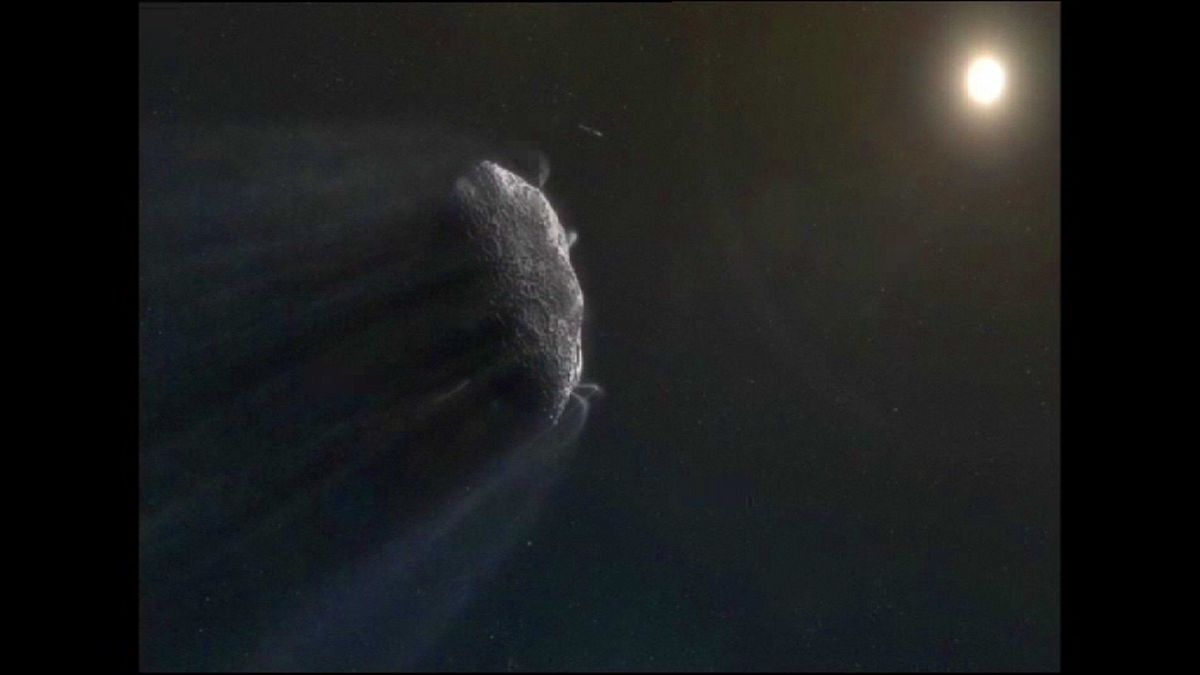At Rosetta main mission control, they held their breath, and then came the climax they’d all been waiting for: a pulse!
‘Comet central’ at the European Space Agency in Darmstadt, Germany, had got a relay from Goldstone, California, where a NASA dish 70 metres wide received a signal that the probe, dormant for three years, had re-activated on Monday.
Rosetta is out beyond Jupiter. She was saving her energy till trajectories lined up.
Her first-time mission is to orbit and land on Churyumov–Gerasimenko comet this August and November, respectively.
She launched ten years ago. Now, five billion kilometres later she’s preparing her approach to study a four kilometre-wide ball of ice and grit.
All this is on no nuclear batteries.
Unlike other long-distance space probes, Rosetta, named after a block of stone that was the key to decrypting Egyptian hieroglyphics, runs on solar power.
The lander robot Philae was named after the island in the Nile where the stone was found.
Asteroids and comets are pristine ‘leftovers’ of Solar System formation, and may provide answers to questions about the origins of life.
Philae will harpoon itself to Churyumov–Gerasimenko, drill samples and take pictures.
A Frenchman decoded the original Rosetta Stone; now the European Space Agency has 20 member states tantalising the whole world with a comet 4.6 billion years old.
That is when our Sun was new, and before material had bonded to create planet Earth!
Claudio Rosmino, euronews: “To explore the importance of Rosetta’s mission, we’re joined from Darmstadt by Paolo Ferri, in charge of the European Space Agency’s mission. Considering the scientific ambition and the fact that this has never been done before, can we compare this to Yuri Gagarin’s first mission into outer space [in 1961]?”
Paolo Ferri, Head of ESA Mission Operations: “In the sense that this is unprecedented, we can certainly compare it, but it’s something different. We don’t have a man on board [the Rosetta craft]. It is a revolution in that we’ve never gone to a comet and stayed on it. There have been ‘fly-overs’, but getting there and staying, that’s the difficult thing. As no one has tried to land on one, yes, it is a historic first in space travel.”
euronews: “Rosetta’s reactivation was a success but that’s only the start. What are the most difficult next stages in the mission?”
Ferri: “The next very critical stage is what we call the rendez-vous manoeuvre. The difference in movement between the probe and the comet at the moment is around one kilometre per second [3,600 kmph]. That has to change. We have to be going more or less at the same speed as the comet to be able to fly around it. That manoeuvre will take place in May, and last for several days, and it has to succeed. If it doesn’t, we won’t manage a landing. When we do land, it’s not a momentary thing, it’s going to be for several weeks. We’re going to have to learn how to fly all over again. This is because orbiting a comet has never been done before. It’s a very dynamic environment. It’s not like flying in space like satellites do. Here, we’re flying in gas and dust and with almost no gravity acting on the probe – it’s about the same as the effect solar radiation will have on it. And then, we’re going to have to look for a landing spot. We have to map the surface. The landing itself will be difficult. We are planning for it but we’re going to have to see how it goes.”
euronews: “A lot of scientists have compared this event to going back in time four and a half billion years. What do you expect to discover?”
Ferri: “With Rosetta, we’re going to stay with the comet for two years, so we’re going to follow its evolution, or at least a big part of its evolution, the life of the comet that takes six years to go round the sun. We’ll get to it at a time when it’s still only slightly active. We’re going to follow its activity as it approaches the Sun. It’s going to start throwing out more and more gas and dust. In the end, we’re going to land on it. This means that, after Rosetta, the science of comets will be completely transformed. That is a giant step.”
euronews: “Professor Ferri, several of your colleagues have described the signal you got back from Rosetta to a child phoning home years after he’s left. What are YOUR personal feelings about this mission?”
Ferri: “Not to see it, well, we were in almost permanent contact for a lot of years, before and after its launch, and then we didn’t see it for two and a half years. That does give that kid-calling-home feeling. On top of that, knowing we would only have a faint signal at a precise moment, like a line we’d agreed to call on in two years, well, the delay we got of three quarters of an hour, even though it was within the one-hour margin we’d allowed for, that wait was the longest 45 minutes in my life.”
[The 45-minute wait was due to the time it took the signal to travel from the probe to Earth at the speed of light, which is approximately 300,000 kilometres per second.]
